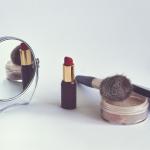
As of 1 August 2020, Belarus has adopted 14 interstate standards (GOST) for perfumery and cosmetic products. The standards regulate safety indicators, methods of their control and measurement, as well as some terms and definitions. The documents were developed by the Belarusian State Institute of Metrology (BelGIM).
The adopted standards are harmonized with international and European standards and regulatory requirements. They also ensure the implementation of the requirements Technical Regulation on the Safety of Cosmetics and Perfumery (TR CU 009/2011), taking into account the growing market demands.
Microbiological indicators are safety indicators for perfumery and cosmetic products. The revised standards have been adopted in order to Belarusian and EAEU standards in line with the new versions of international standards. Their application will ensure that the results of tests of perfumery and cosmetic products according to these indicators, carried out using these methods, in the countries of the Eurasian Economic Union (EAEU) and the countries of the European Union (EU) will be in line with the requirements of the applicable international standards.
To ensure the safety and quality of finished cosmetic products, the manufacturer must ensure that they do not contain any prohibited substances that may have a harmful effect on the health of the consumer.
The new standards establish methods the detection of presence of such substances. For example, a screening method used for on-line sampling and detection of diethanolamine (DEA) in perfumery and cosmetic products and raw materials used for their production. The restriction on the use of this component was introduced due to the fact that the residual quantities of this substance are capable of reacting with some other ingredients of products and packaging, which can lead to the formation of highly carcinogenic substance - nitrosodiethanolamine (NDELA).
Another example is skin-lightening / whitening creams. Some of their ingredients can be harmful to the consumer if they contain unsafe toxic substances (such as hydroquinone). In this regard, the standards establish a method of high performance liquid chromatography with detection in the ultraviolet region of the spectrum (HPLC / UV) for the identification and quantitative determination of a number of such substances.
Many oral hygiene products, such as toothpaste, contain fluoride ions. They contribute to the prevention of tooth decay, but their excessive concentrations could harm human health. Therefore, it is important to be able to identify and calculate the amount of fluoride in the finished product. Thus, one of the introduced standards establishes a method for determining the quantitative content of fluoride for fluorine-containing oral hygiene products.
TR CU 009/2011 sets out requirements for the toxicological indicators of perfumery and cosmetic products. To implement these requirements, four standards are being introduced for the alternative methods of product testing (in vitro). Their use will allow avoiding testing on animals (in vivo) and thus removing technical barriers to the supply of perfumery and cosmetic products manufactured in the EAEU to the EU countries where the sale of finished perfumery and cosmetic products, the ingredients of which or their combinations have been tested on animals, is prohibited. The ban on testing perfumery and cosmetic products on animals also exists in a number of other (non-EU) countries.
In addition, Belarus is the responsible developer of the next amendment No. 3 to the CU TR 009/2011, in accordance with the plan for the development of the EAEU technical regulations and amendments to the technical regulations of the EAEU. The draft of the amendment is likely to be submitted to the EEC for adoption by the end of 2021. This amendment, which is based on the practice of applying technical regulations, will clarify the issues of attributing certain types of products to perfumery and cosmetic, some microbiological indicators, as well as requirements for labelling and conformity assessment of perfumery and cosmetic products falling under the scope of other TR CU, for example, toys and some other product categories.





